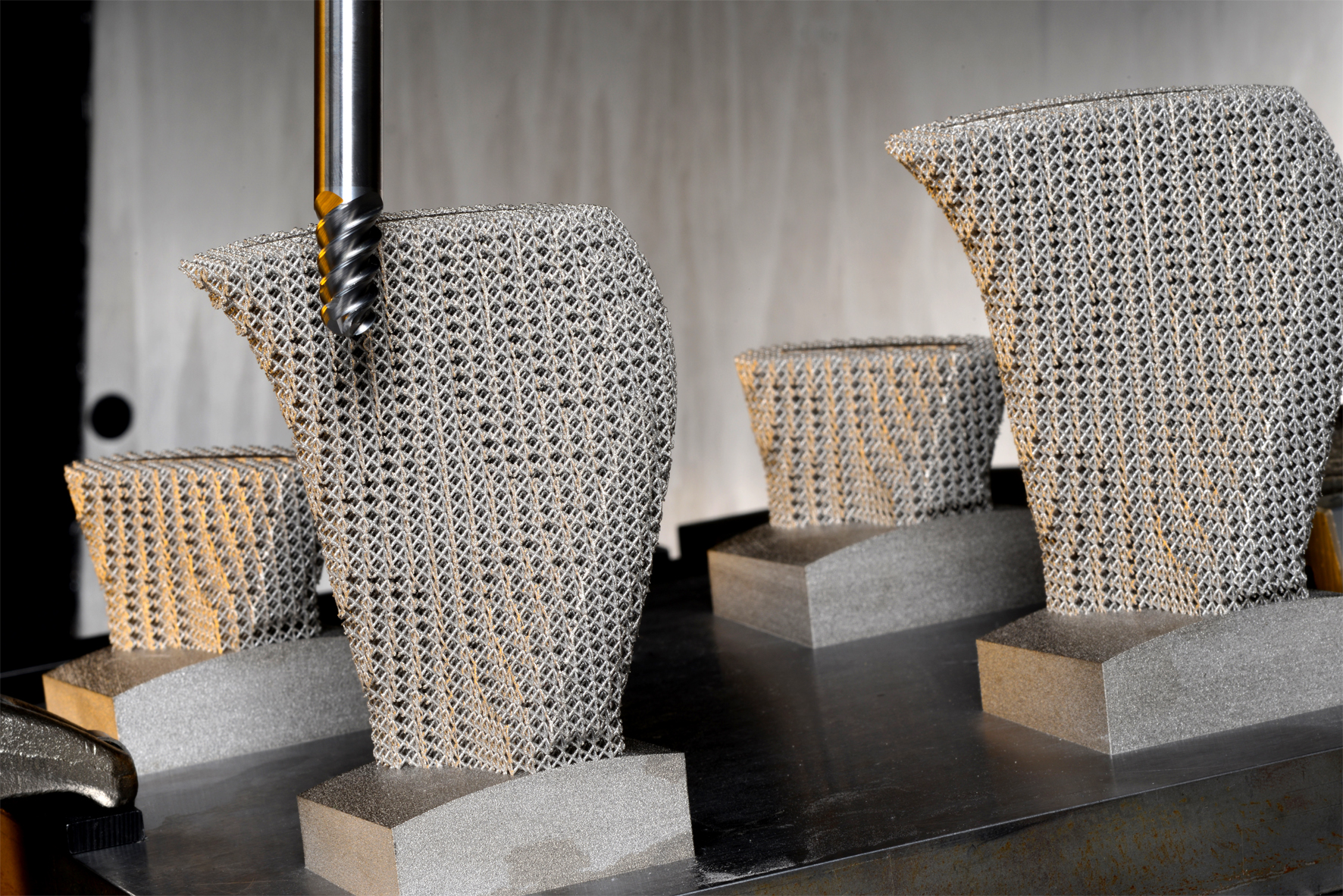3D-Printing: Support structures to prevent vibrations in post-processing operations for thin-walled parts
One of the main features of additive manufacturing processes such as 3D-printing is that the complexity of the component shapes it produces, is virtually unlimited. However, high surface quality in metallic components can frequently be achieved only via milling or grinding finishing operations. Milling operations conducted on thin-walled parts in particular often cause vibrations which impact negatively on part accuracy and on machining time. The Fraunhofer Institute for Production Technology IPT and the Fraunhofer Institute for Laser Technology ILT in Aachen will be presenting special-purpose support structures which can eliminate these vibrations in post-processing operations at Farnborough International Airshow from 16 – 22 July 2018.


As a rule, metallic components manufactured additively in a Selective Laser Melting (SLM) process, are designed to have larger-than-usual oversize to allow for the functional surfaces to be finished in milling operations since this is the only way of ensuring that all of the surface tolerances and quality requirements can be met. Thin-walled parts are particularly prone to vibration in the course of the machining and material removal operations resulting either in poor surface quality or even rendering the components unusable.
The Fraunhofer IPT and ILT therefore expand the design of components manufactured in additive processes, to include support structures which increase the stiffness of the susceptible areas and reduce vibrations. These supporting elements can be removed with relatively little effort in the course of the surface finishing operation. Parts stabilized in this way can thus be manufactured in higher quality in less time and with lower level of tool wear.
The two Fraunhofer-Institutes, who will be presenting the new concept for manufacturing using additive and cutting for the first time at the Farnborough International Airshow, offer companies interested in becoming our project partners, the opportunity to collaborate in exploring new support structure geometries and in further developing them.
 ICTM Aachen – International Center for Turbomachinery Manufacturing
ICTM Aachen – International Center for Turbomachinery Manufacturing